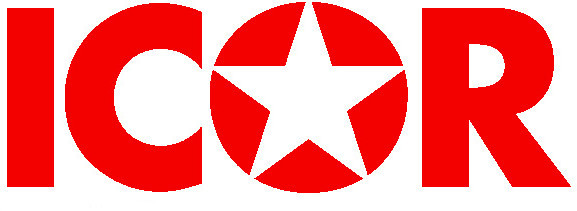Book review of Grover Furrs book 'Yezhov vs. Stalin' (part 2)
Existing translations
One person who has tapped into the archives is Grover Furr, an American professor of Medieval English literature at Montclair State University. Furr’s first full-length book, Khrushchev Lied (2011) investigates each of the allegations made against Stalin (and Beria) by Khrushchev in his secret speech and provides documentary evidence that establishes their monstrous falsehood.
This was followed by The Murder of Sergei Kirov (2013) which undermined the so-called “scholarship” on which accusations that either Stalin had Kirov murdered, or that the murder was the act of a lone assassin, have been based. Using again a mountain of documentary evidence, Furr showed that Kirov’s assassination was planned and carried out by a group loyal to an anti-Party clique headed by Zinoviev and others, and with ties to Trotsky.
The following year, Furr published a lengthy refutation of Timothy Snyder’s widely-read Bloodlands which had equated Stalin with Hitler and blamed both for the slaughter of millions in the Ukraine, Byelorussia and Poland. It is worth giving the full title of Furr’s book: BLOOD LIES: The Evidence that Every Accusation against Joseph Stalin and the Soviet Union in Timothy Snyder’s Bloodlands Is False. Plus: What Really Happened in: the Famine of 1932-33; the “Polish Operation”; the “Great Terror”; the Molotov-Ribbentrop Pact; the “Soviet invasion of Poland”; the“Katyn Massacre”; the Warsaw Uprising; and “Stalin’s Anti-Semitism”. Furr looked into every source cited by Snyder, and checked every one of his footnotes to produce a credible argument that Snyder was dishonest throughout his book.
A year later (2015) came Trotsky’s “Amalgams.” Trotsky's Lies, The Moscow Trials As Evidence, The Dewey Commission. (Trotsky's Conspiracies of the 1930s, Volume One). Trotsky’s own archives, as well as Soviet era archives, served to establish that he had maintained contact with Zinoviev, Kamenev and Bukharin and that the assassination of Stalin and other top Soviet leaders was the object of their conspiracy. Given the successes of the First Five Year plan and Stalin’s and the Party’s great popularity with the people, this was the only way that Trotsky and other oppositionists could come to power.
Returning for a moment to the 70-30 evaluation of Stalin held by the Chinese and many other genuine Marxist-Leninists, a specific criticism of errors by Stalin was the following: “in 1937 and 1938 there occurred the error of enlarging the scope of the suppression of counter-revolutionaries” (On the Question of Stalin). Indeed, there was a sharp increase in the execution of alleged spies, conspirators and counter-revolutionaries during these two years. Yet, argues Furr in his latest book, Yezhov vs. Stalin: The Truth About Mass Repressions and the So-Called ‘Great Terror’ in the USSR (2016), Stalin was unaware of the scale of the repressions and not responsible for Yezhov’s private war on loyal Party members and Communists.
Furr presents Stalin as determined to restrict the power of the Party bureaucracy by introducing through his 1936 Constitution a provision for multicandidate secret ballot elections. This, together with a guaranteed right to recall elected officials who had lost the confidence of their electors, was designed to show working people world-wide that the dictatorship of the proletariat was the most democratic system of government, and far superior to anything that bourgeois democracies practiced.
However, the powerful regional First Secretaries and other top officials frustrated and opposed Stalin’s attempted democratisation and, fearing the electoral influence of thousands of kulaks and others released from state prisons in 1935, quietly acquiesced in Yezhov’s claims of a revived widespread conspiracy requiring new repressive measures. When the scale of Yezhov’s criminal activity became known to Stalin, he had him arrested and replaced by Beria who brought the repressions to an end.
As Furr makes clear in each of his books, it is almost impossible to dismantle what he calls the “anti-Stalin paradigm” which he defines in terms of the following:
•Stalin was a “dictator”. Therefore, he either initiated or could have stopped everything important that occurred. Therefore, whatever happened, happened because he wanted it, or something very like it, to happen. Stalin was always “in control”.
•The alleged conspiracies against the Stalin government were all fabrications. None of them really existed.
•It follows that the evidence produced in the testimony at the Moscow Trials, and in the interrogations and confession statements that have gradually been published since the end of the USSR in 1991, must be fabrications, and so are disregarded.
•Stalin never wanted democratic elections. The struggle by Stalin and his supporters for contested elections to the soviets (the legislative arm of the Soviet government) was either a sham or intended as a mechanism to get rid of entrenched local leaders whose power Stalin perceived as threatening in some way.
But “almost impossible” is not the same as “completely impossible”. The mass reappraisal and appreciation of Stalin will not take place overnight, but take place it will.
History will be kinder to Stalin than to the Trotskys, Khrushchevs, Conquests and others who use a straw man, a caricature, a demonised Stalin, to attack and oppose the Communist alternative to capitalism.
Document Actions




